Have you ever wondered what life was like for a 1920s housewife? In the midst of a decade of great change, there is much to explore about the life of housewives in the 1920s!
Image by Library of Congress
1920s Housewife
This is a continuation of my series on exploring the lives of vintage housewives. You can find my other articles about vintage housewives here:
Vintage Housewife: What Was Life Like at the Turn of the 20th Century?
1930s Housewife: Life During the Great Depression
Wartime Wife: Life for the 1940s Housewife
How Did Life Change for Housewives in the 1920s?
Right on the heels of World War I, the 1920s ushered in an era of great change and advancement. With advancements in technology, the world of the the 1920s housewife expanded greatly.
Technology in the 1920s
During the 1920s a great deal of technology made its way into the home. Some of the biggest changes are that electricity and indoor plumbing became more widely available.
Additionally, many labor saving devices became more commonplace. Items such as iceboxes, vacuum cleaners, electric irons, washing machines, and electric stoves were massed produced and made available to the general public.
This drastically changed the way in which the homemaker went about her household duties. Her methods of cooking changed and her access to food preservation improved significantly (Side note: Check out my Vintage Inspired Icebox Cake recipe! It is based off of a 1920s recipe and shares more of the history of the icebox!).
Image by Library of Congress
Another invention that broadened the world of housewives in the 1920s is the radio. Radios became more commonplace in the home, which gave the homemaker easier access to radio programming and news.
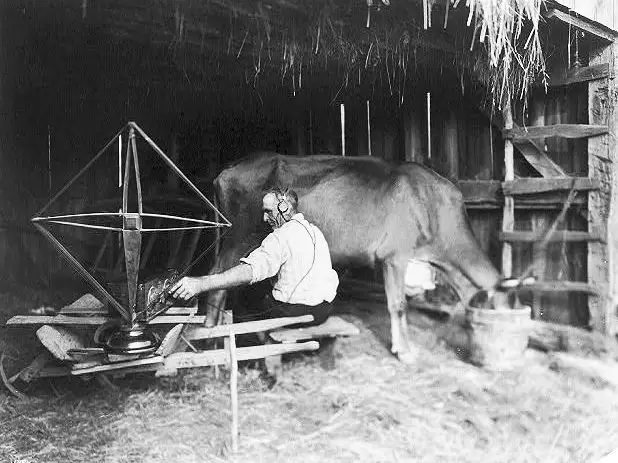
While technology opened up a new world, the technology could still be cumbersome to manage. Here a farmer listens to the radio while he milks his cow. Early on, headsets were required to listen to the radio.
Image by Library of Congress
1920s Housewife Fashion and Clothing
The 1920s also saw a significant shift in women’s fashion. In my previous article I discussed the role that corsets played in the wardrobes of women. In short, corsets were quite constrictive and sometimes led to other health problems for women.
But during the 1920s corsets, as well as bustles, started to go out of fashion. The vintage women of the 1920s began embracing a looser, more comfortable style of clothing.
Leading up to the 1920s, skirts started to become more common and were worn in place of dresses. The length of the skirts also started to shorten.
For awhile, skirts were worn just above the ankle. But thanks to the influence of the flappers of the 1920s, skirts started to be worn at knee level. It became so common, that even women in rural areas started wearing knee length skirts.
While skirts started to make their way into women’s fashion, dresses were not left behind. The chemise dress, with a lower waistline became very popular in the 1920s (chemise means shirt in French).
Other stereotypical fashion items from that decade included long beaded pearl necklaces and bobbed hairstyles. Women also started to wear more makeup during this decade.
Image by Library of Congress
Another clothing item that gained popularity, particularly for the 1920s housewife, was the house dress. House dresses were lightweight, pullover frocks that had a single belt.
They were loose and comfortable and were meant to only be worn inside the home. A women could don her house dress and go about her housework in an article of clothing that was not consrtictive to her movements. When she left the house, she could then easily change into a nicer, unsoiled outfit.
Voting
Perhaps one of the biggest and most monumental changes that women experienced in the 1920s was gaining the right to vote when the 19th Amendment passed on August 26, 1920. While the 19th Amendment failed to secure the vote for all women in the United States, it was still a groundbreaking moment that paved the way for further change.
What Did Housewives do in the 1920s?
When you think about the 1920s, what comes to mind? Flappers is one of the first things I think of. And while flappers were certainly a big part of the cultural shift of the 1920s, in reality the majority of women of that decade were homemakers who diligently cared for their husbands and children.
Image by Library of Congress
Family Life in the 1920s
Leading up to, and during the 1920s, there was a large shift in the population from rural areas to cities. This lead to more than half of Americans living in cities.
In 1920, two thirds of people over the age of 14 were married. The average age of marriage for men was 24, and the average age of marriage for women was 21.
An interesting note is that the average size of families began to shrink during this decade. Rather than having large families with many children, most families were choosing to have just a few children.
Typically the husband worked outside the home while the 1920s housewife tended to household chores. Some of the chores she was responsible for included sewing, cooking, cleaning, and child care.
Image by Library of Congress
As you recall, this was a time of great innovation and many time saving devices were created for women to help ease their duties in the home. Now that women had access to washers, vacuums, electric stoves, and other appliances, they were expected to use the time saved to better care for their families.
Image by Library of Congress
The concept of the scientific method of homemaking emerged in homes again. As the technology changed and cooking ranges became more standard, recipes with more precise instructions were also developed to keep up with the times.
Advertising and Consumerism
Now that the 1920s housewife had access to the broader world through radio, magazines, and newspapers, a bit of an information overload began to fill her life.
Radio programs shared information and tips from experts so that women could better their homemaking skills.
Image by Library of Congress
Consumerism was also on the rise. Mass advertising was marketed directly at the 1920s housewife through radio, magazines, newspapers, and movies. Advertisers were a bit stealthy. They created an image of an ideal woman who was extremely proficient in her homemaking.
This led to real women feeling inadequate at their duties. Marketers played up on this feeling of inadequecy and used it to convince women that the answer to all their problems was in purchasing the item they were advertising.
Work
Due to more women taking on jobs during World War I, there was a shift of more women remaining in the workforce into the 1920s.
Typically, women who worked outside of the home were not married. Just 15% of married women whose husbands worked, also worked outside of the home.
1920s women took on jobs as stenographers, secretaries, telephone operators, store clerks, factory workers, and school teachers.
Image by Library of Congress
Leisure
The 1920s were a time of relative prosperity (at least perceived prosperity, but that is a post for another day). Since people were making more money, they had more time and disposable income for leisure activities. The types of activities that people did in their spare time included: dancing, attending sports games (especially baseball), listening to the radio, playing board games, and attending movies.
Movie theaters, called “picture palaces” played a significant role in the the culture of the 1920s. They were very popular, and as the technology improved movies with sound started playing in the theaters in the late 1920s.
What Did Rural Life Look Like in the 1920s?
Life for the 1920s housewife in a rural area looked quite different than it did for housewives in the city. While life in the 1920s was advancing at a rapid pace in the cities, those in rural areas had to wait longer for the new technology to make its way out to the less populated regions.
Image by Library of Congress
Access to Technology
Life remained largely unchanged for people out in rural areas, while those in the city began enjoying luxuries such as electricity, indoor plumbing, flush toilets, electric stoves, and indoor lighting.
While people in rural areas were aware of the latest and greatest technology and appliances, the rural infrastructure simply did not allow for the advancements to make their way out to those areas in a timely fashion.
Image by Library of Congress
Farming
Most rural residents were subsistence farmers who also sold off surplus produce and goods to earn some income for the family.
Some types of items that were sold included eggs, milk, butter, produce, and meat. The 1920s housewife often would be in charge of selling the excess goods in order to earn money for the family.
Farmers for the most part still employed traditional methods in their farming, again because mass production and newer technology took longer to reach rural parts.
Image by Library of Congress
All members of the family had jobs on the farm. Children helped out by feeding animals, gathering eggs, and chopping wood, among other chores.
Image by Library of Congress
Family Life and Leisure
While two thirds of the overall population lived in cities in the 1920s, of the people who lived in rural areas, more than half of them were families.
A typical morning on a farm involved children completing their chores and then heading off to school. Children would either walk, ride bikes, or ride a horse to school. In that era, schools were placed four miles apart, which meant most children had a two mile or less commute to school.
Image by Library of Congress
With so many families in rural areas, family life played a large role in the culture of rural areas. Farming involved a lot of hard work and little income, but families and other rural folk still managed to find some time for leisure.
Leisure time in rural areas looked quite different from the city. In the country, it was more common to find families gathering together for an end of the school year picnic, church potlucks, and ice cream socials.
Of course trips to town were also a big event and rural families sometimes went to the movies or other activities while they were in town.
Conclusion
The people of the 1920s experienced a large cultural shift. More people lived in cities, families were smaller in size, and generally it was a time of prosperity.
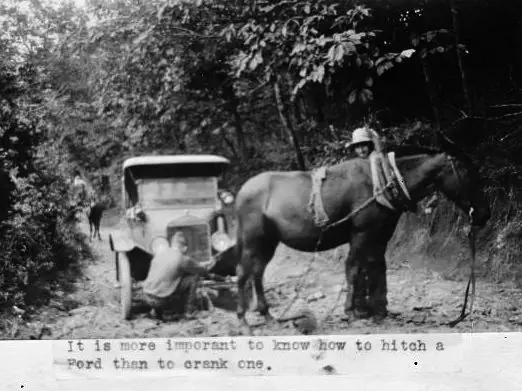
I think this photo perfectly captures the tension of the decade. The new technology was impressive, but still lacked refinement. Old ways were still necessary. The caption of the photo reads “It is more important to know how to hitch a Ford than to crank one.”
Image by Library of Congress
More money and technology that helped ease the work load gave people more free time to pursue leisure activities. While the well known flapper culture of the 1920s certainly had a great influence on the era, most families lived regular, quiet lives.
The family unit was still very much intact and the 1920s housewife was devoted to her family. The clothing of the era was much less restrictive and allowed women to more freely move about to complete their housework. It was also becoming more common for single women to work outside the home.
Techonolgy played a significant role in this decade as it brought about an increase in the standard of living and made many tedious jobs easier to complete.
While the technology advanced forward, there remained a large divide between cities and rural areas. With less access to the new advancements, rural areas overall experienced less change than the cities.
The prosperity of the decade would eventually come to a screeching halt when the stock market crashed in 1929. Life in the coming decade of the 1930s would look drastically different for the vintage housewife.
What are your thoughts on the life of the 1920s housewife? What are some of the positives and negatives that you see from this decade? Share in the comments below!
Other Articles in the Series:
Vintage Housewife: What Was Life Like at the Turn of the 20th Century?
1930s Housewife: Life During the Great Depression
Wartime Wife: Life for the 1940s Housewife
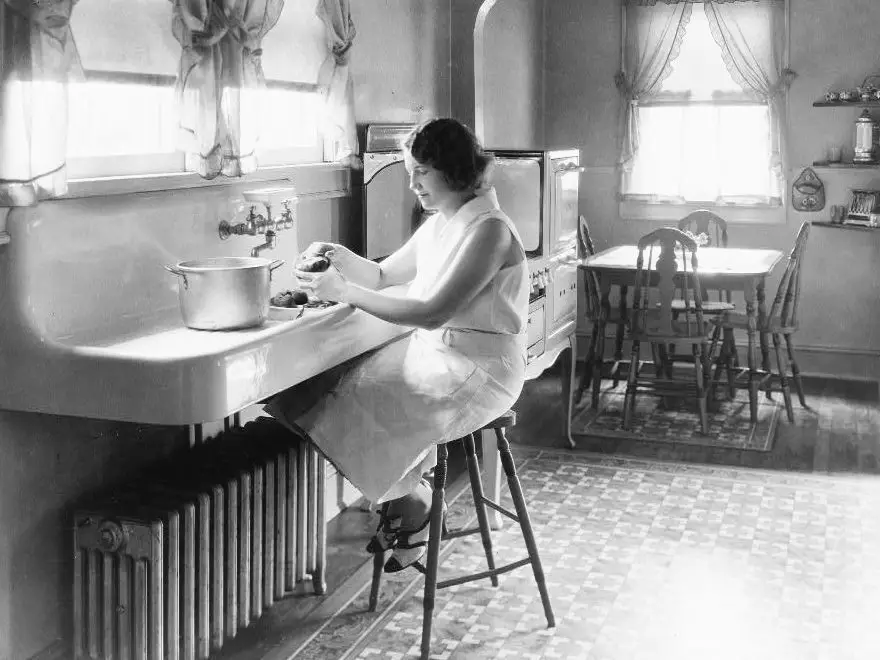
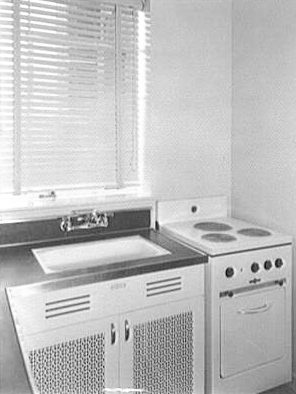
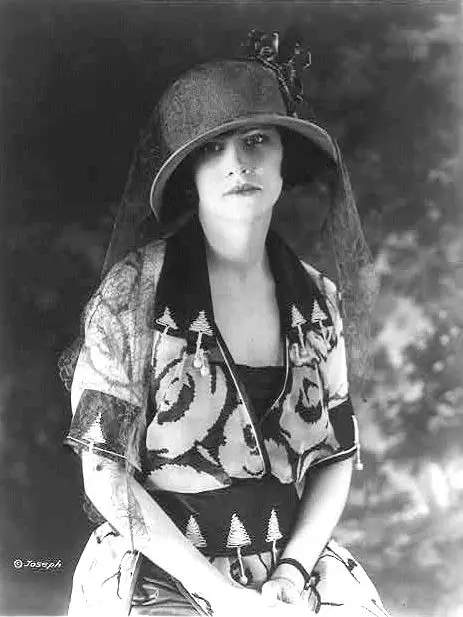
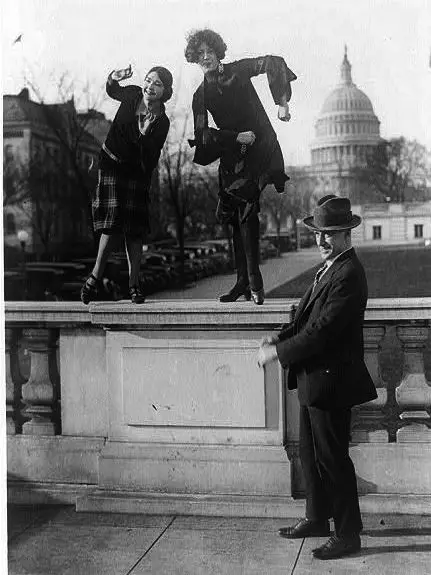
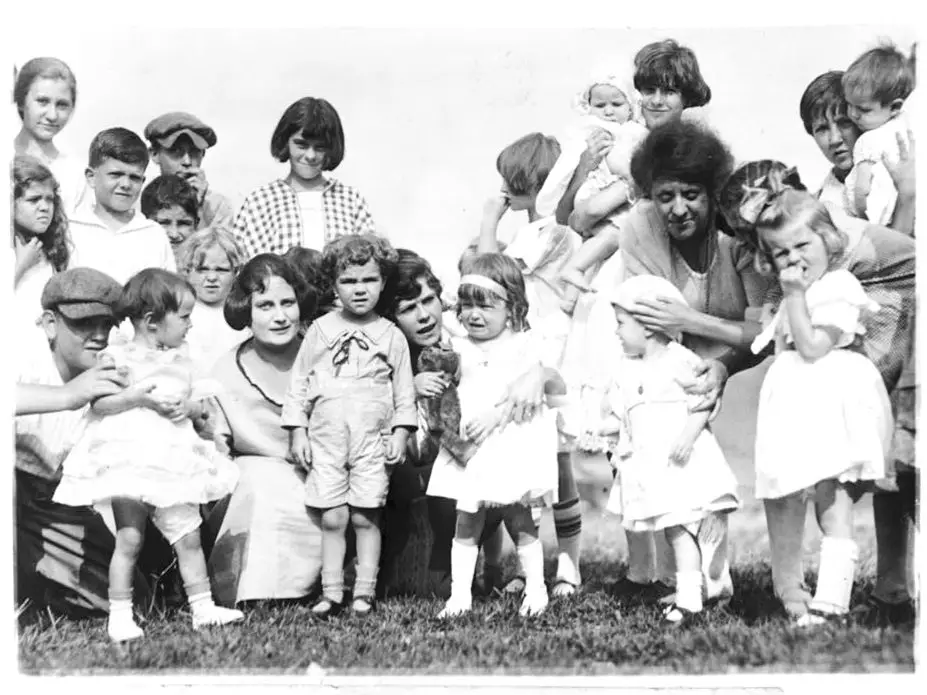
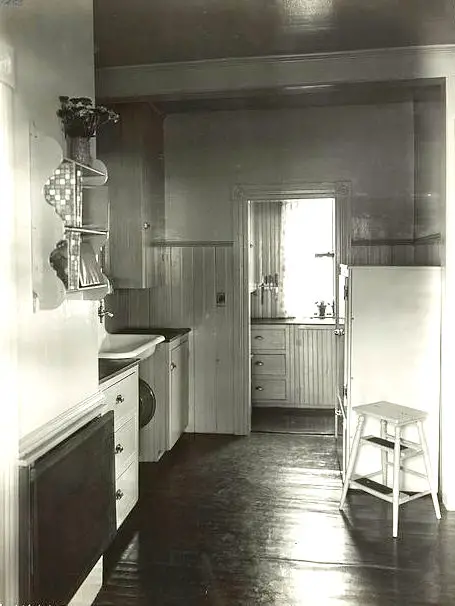
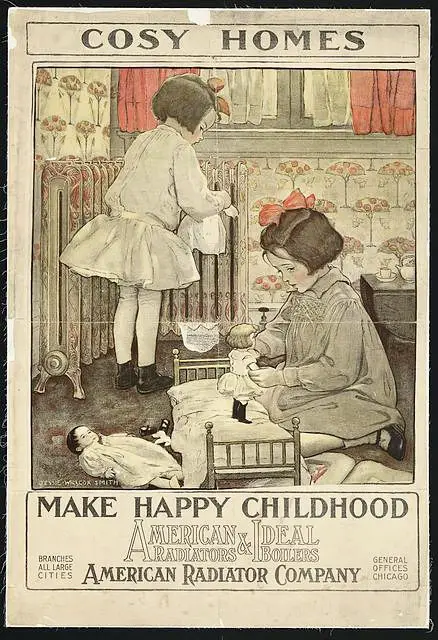
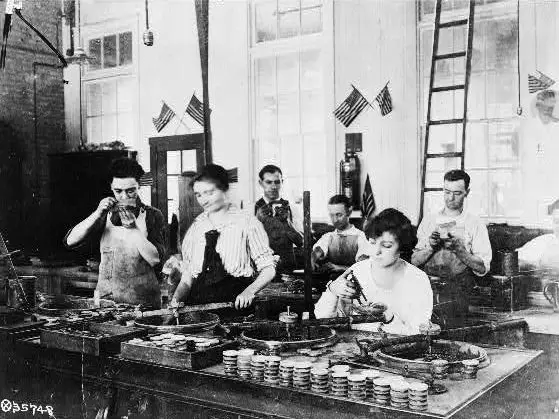
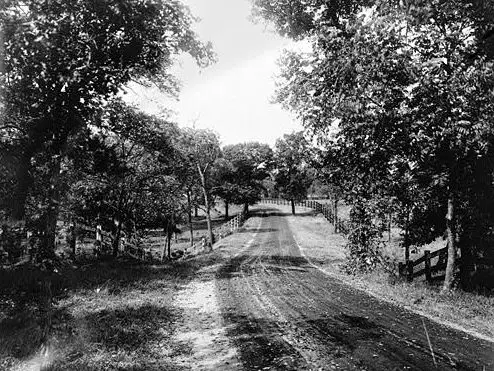
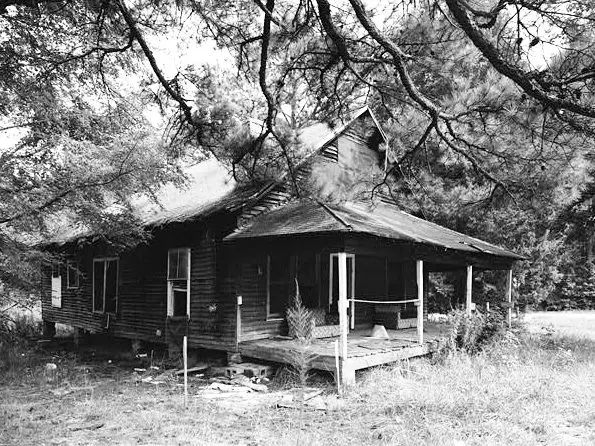
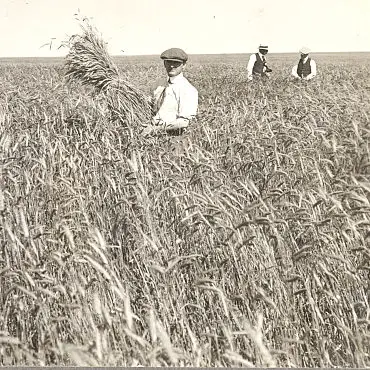
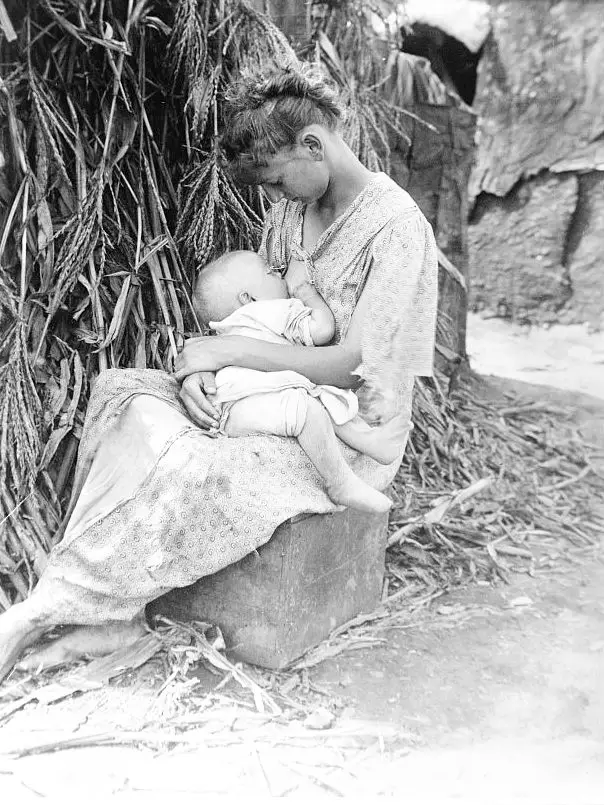
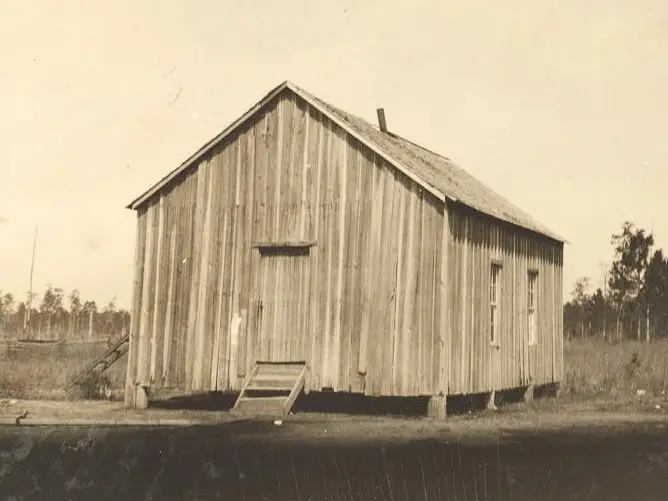
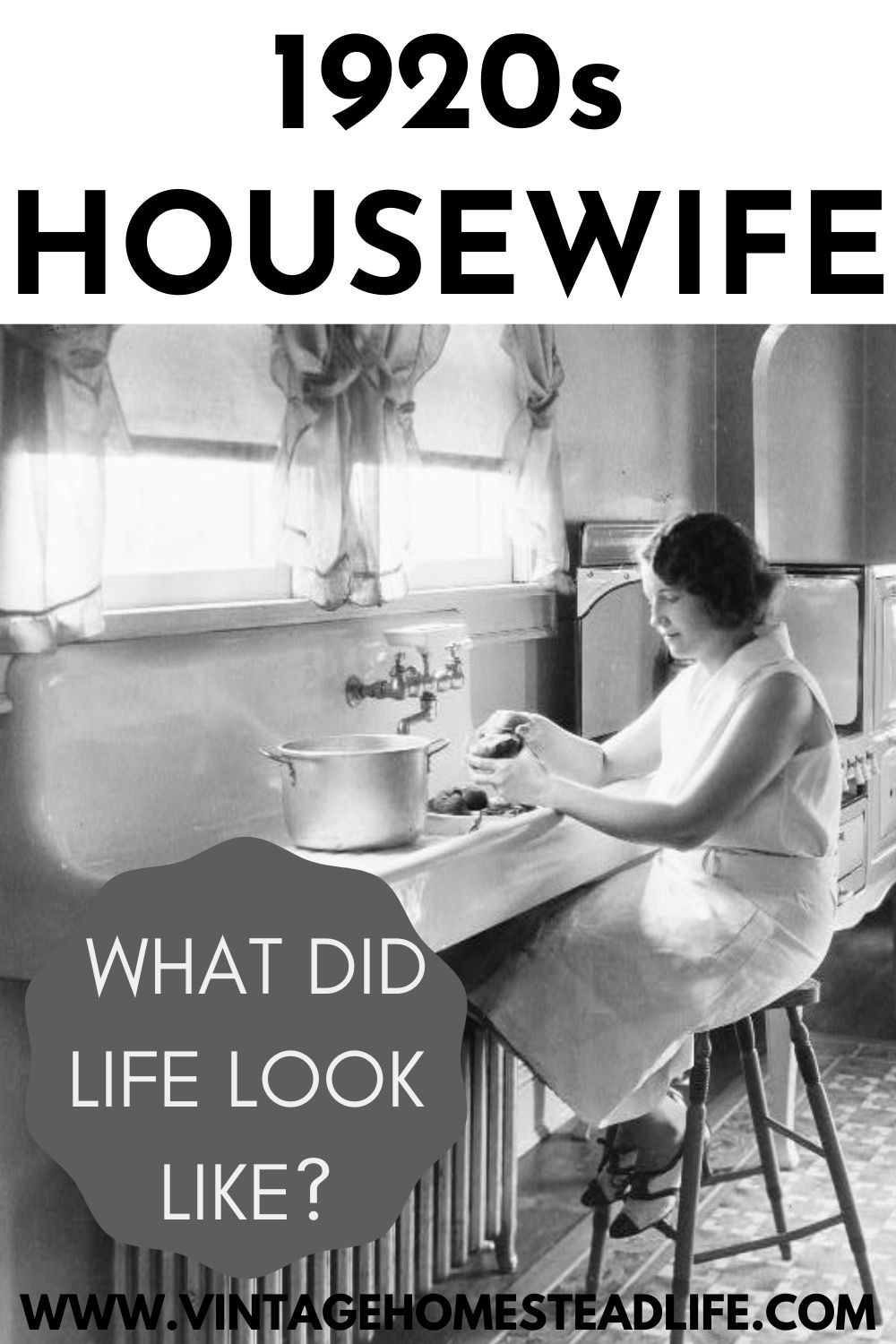

Have you ever read the book “Never Done”? It’s a history of housework.
I’ve not read it, but it sounds like a book that I would really enjoy. I will add it to my list. Thank you for the suggestion!
It is a good book
Thank you for all of this wonderful history. I am constructing a doll house in the 1920s era theme, and the housewife roll, as well as the housemaid, determine so much of the decor.
What a unique project you are working on! I am so glad this helped you.
My grandmothers were housewives in the 20’s. One lived in a town in New York in very rural Kentucky. My grandparents in rural Kentucky had a few acres and my grandfather mined coal. My father talked of getting electricity, a single lightbulb hanging on a wire and his dad getting a car and a radio. Neighbors came over to see and listen. My grandmother did tailoring to earn extra money. When the depression hit the mine closed and things were very tough.
Thank you for sharing that piece of your family history! I always enjoy hearing special memories from others.